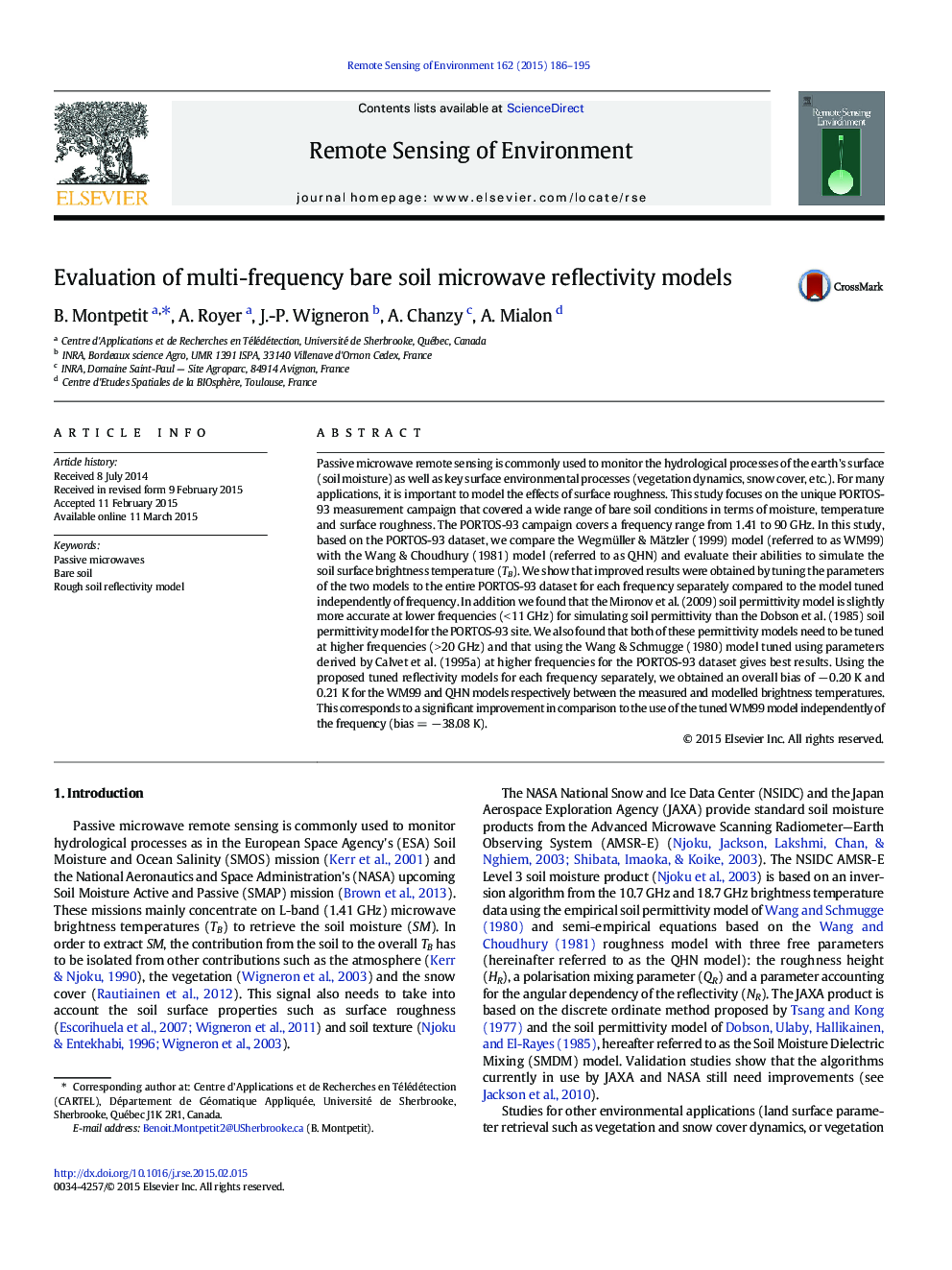| Article ID | Journal | Published Year | Pages | File Type |
|---|---|---|---|---|
| 4458849 | Remote Sensing of Environment | 2015 | 10 Pages |
•Multi-frequency, multi-angular rough bare soil reflectivity modelling•The GRMDM soil reflectivity model is more accurate than the SMDM model.•The GRMDM and SMDM models at higher frequencies (> 10 GHz) are not accurate.•The WM99 and QHN model gives similar RMSE.•QHN is better for soil parameterization because of less parameters to calibrate.
Passive microwave remote sensing is commonly used to monitor the hydrological processes of the earth's surface (soil moisture) as well as key surface environmental processes (vegetation dynamics, snow cover, etc.). For many applications, it is important to model the effects of surface roughness. This study focuses on the unique PORTOS-93 measurement campaign that covered a wide range of bare soil conditions in terms of moisture, temperature and surface roughness. The PORTOS-93 campaign covers a frequency range from 1.41 to 90 GHz. In this study, based on the PORTOS-93 dataset, we compare the Wegmüller & Mätzler (1999) model (referred to as WM99) with the Wang & Choudhury (1981) model (referred to as QHN) and evaluate their abilities to simulate the soil surface brightness temperature (TB). We show that improved results were obtained by tuning the parameters of the two models to the entire PORTOS-93 dataset for each frequency separately compared to the model tuned independently of frequency. In addition we found that the Mironov et al. (2009) soil permittivity model is slightly more accurate at lower frequencies (< 11 GHz) for simulating soil permittivity than the Dobson et al. (1985) soil permittivity model for the PORTOS-93 site. We also found that both of these permittivity models need to be tuned at higher frequencies (> 20 GHz) and that using the Wang & Schmugge (1980) model tuned using parameters derived by Calvet et al. (1995a) at higher frequencies for the PORTOS-93 dataset gives best results. Using the proposed tuned reflectivity models for each frequency separately, we obtained an overall bias of − 0.20 K and 0.21 K for the WM99 and QHN models respectively between the measured and modelled brightness temperatures. This corresponds to a significant improvement in comparison to the use of the tuned WM99 model independently of the frequency (bias = − 38.08 K).
